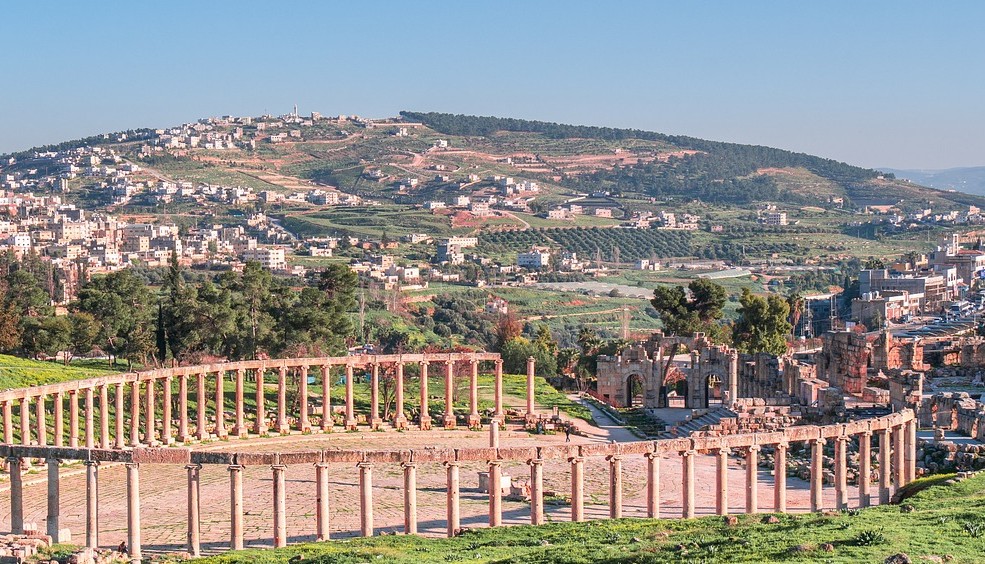5 top destinations this summer (2023)
If you're still undecided about where to go this summer, we're about to make it easy for you. We have prepared a few ideas, both popular and less well known, that will get people talking this year.
more info12 summer festivals in Barcelona you won't want to miss
Summer in Barcelona is packed with cultural events. Music and theatre festivals take centre stage, from Primavera Sound, Jardins de Pedralbes and Sónar to the Grec Festival of Barcelona and many more. We take a look at the some of the stand-out festivals so you can start planning your next excuse to visit Barcelona (again)!
more info8 fascinating facts you probably didn’t know about Rome
If you’re planning a trip to Rome anytime soon, check out these fascinating facts to help you get the most out of the Eternal City.
more infoSiguiendo los pasos de Ulises
This piece of land bathed by the Mediterranean harbors is one of the most beautiful places of Greece. Its spectacular beaches combine with cultural attractions, where modernity and comfort have learned to respect the tradition of one of the oldest cultures of mankind.
The capital has the same name as the island: Corfu and stands out as the largest Greek medieval city and one of the most beautiful in the Mediterranean. Let's get lost in nooks and crannies ...
Spianada
One of the must see places of Corfu is certainly Spianada Square, one of the largest in Greece in extent and meeting place for visitors and tourists.
The most prominent building in the square is the Ribbon, whose beautiful arcades provides a good shadow to take shelter from the sun. In northern Spianada stands the Palacio de San Miguel and San Jorge, which dates from the early British occupation (1814-1824) and in the east we found a Venetian fortification of the fifteenth century.
In the same square, we also find the New Fortification, the council (s XVII), the Ionian Academy and the Ionian Parliament. The Reading Company, the oldest cultural foundation of modern Greece and Ancient Prefecture, Kapodistrias old building that now houses the offices of the Ionian University.
The Corfu neighborhoods: Kampielo, Mouragia, Mantouki and Ombriaki
Getting into the bowels of the capital, we find a maze of cobbled streets. We are in the neighborhood Kampielo, the oldest and one of the Corfu that retain the charm. Following the route, we arrive at Mouragia neighborhood, an authentic coastal beauty surrounded by walls, where each photograph becomes a spectacular postcard. Down to the sea, we stumbled upon the Mantouki, in inmeiaciones the new port and the old Jewish quarter, known as the Ombriaki.
Arriving to Corfu town, find the square Soroko, landmark of modern island life and a good stop on the way to regain strength.
The art in Corfu
As we would expect, an archipelago full of history, the island of Corfu hosts three museums. The Archaeological Museum, which contains remains of excavations in situ; the Byzantine and post-Byzantine Museum of Art; and the Asian Art Museum.
The Corfu beaches
No doubt about it! We are in a privileged place to enjoy the sun and the beach. In this little slice of Mediterranean paradise, we found some spectacular beaches.
Maybe the beaches of Corfu do not enjoy the popularity of its neighbors, but we are among the best in the Mediterranean.
On the east coast, the most beautiful are Kerasia, Kouloura, Nisaki, Barbati, Dasia, and the tourist resort of Komeno, Agios Ioannis, Peristeron, Benitses... While in the north, we highlight Achavari, Sidari and Peroulades. But if we have to choose one, our favorite is Arilas, perhaps one of the most beautiful on the island, with fine sand and an assortment of small islands that give it its quaint touch.
Also nice are Paleokastrina, Ermones, Mirtiotisa and Glyfada, that has become a massive resort.
After this stop on your journey to Ithaca, we are confident that Ulysses scored on its agenda as a must to return to.
By Nadia Polo
Corfu by Bogdan Giuşcă | Corfu by Dr K | Fortaleza Frourio in Kerkyra by Tasoskessaris | Monasterios de Pondikonisi y Vlajerna en la isla de Pontikonisi by StefanosKozanis | Talon de Aquiles by Tasoskessaris | Palacio Achilleion by Thomas Schoch
Why not take a trip to Corfu? Have a look at our flights here!
more info




